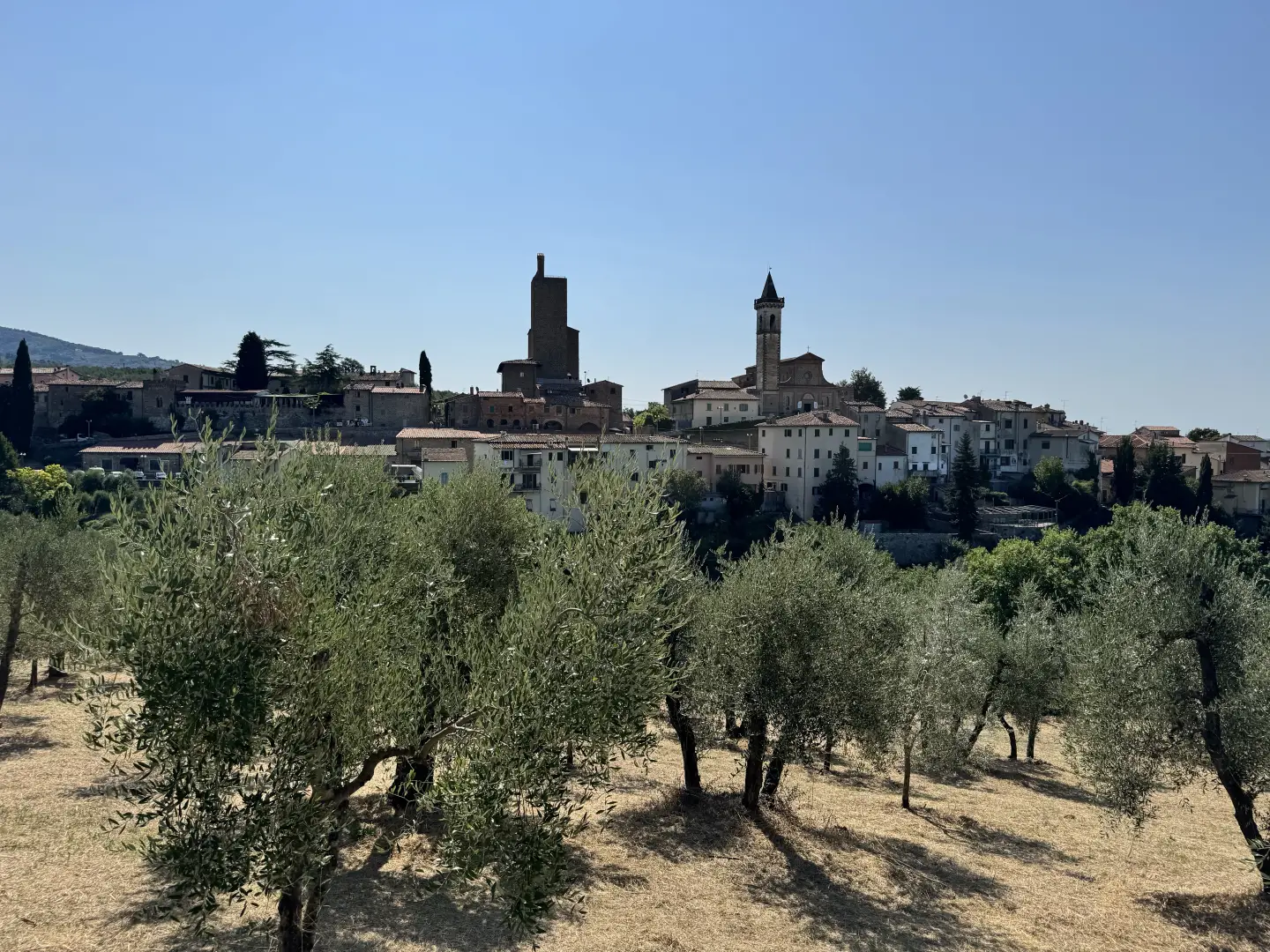Win

Introduction
Vinci is a charming municipality located in the hills of Montalbano, in the western part of the metropolitan city of Florence, Tuscany. It rises in a transitional area between the Arno plain and the foothills of the Apennines, offering a gentle and typically Tuscan landscape of olive groves, vineyards and historic villages. Famous the world over for being the birthplace of Leonardo da Vinci, it is now a cultural and tourist reference point, at the centre of itineraries linked to the figure of the Renaissance genius.
Description
The municipal territory of Vinci extends over a predominantly hilly area, between Montalbano to the north and the Arno valley to the south. The altitude varies from about 20 metres in the lower areas to 444 metres on the hill ridge, with landscapes that alternate between holm-oak and chestnut woods, centuries-old olive groves and orderly vineyards, an integral part of the Chianti Montalbano denomination of origin. The historical centre stands in a panoramic position, dominated by the tower of the castle of the Conti Guidi, now home to the Museo Leonardiano, which collects models and drawings inspired by Leonardo's inventions.
The history of Vinci is deeply intertwined with the vicissitudes of the Da Vinci family, whose roots here date back to the Middle Ages. The castle of the Conti Guidi, dating back to the 11th century, is the original nucleus of the village, which has developed over the centuries maintaining a compact and harmonious urban fabric. Leonardo da Vinci, a central figure of the European Renaissance, was born here in 1452: his birthplace, in the locality of Anchiano, is today one of the most visited places in the municipality, connected to the hamlet by a footpath immersed in the Tuscan countryside.
The economy of Vinci, historically linked to agriculture, is still based on the production of extra virgin olive oil and wine, with numerous farms and agritourisms offering local products and rural hospitality. These traditional activities are flanked by a lively tourist and cultural sector, fuelled by Leonardo's international appeal. Tourism is in fact a fundamental resource, with constant flows throughout the year thanks to the museums, events and thematic itineraries.
From a cultural point of view, Vinci is very active and attentive to the valorisation of its heritage. In addition to the Museo Leonardiano, there is the Biblioteca Leonardiana, a specialised research centre on Leonardo's thought and works, and the exhibition 'Leonardo and the Renaissance of Wine', dedicated to the master's wine studies. Traditional festivities include the 'Genius of Vinci', a historical re-enactment and popular show that enlivens the village with artists, figurants and light installations, and the 'Festival of the Olio Novo', which celebrates local oil production.
Hiking finds an ideal environment in Montalbano, with a network of well-marked CAI trails that wind through woods, clearings and ancient parish churches. The 'Sentiero di Leonardo', which connects the house where Leonardo was born with the centre of the village, is one of the most popular itineraries, also for its symbolic value. Along the way, one encounters artistic installations, information panels and suggestive panoramic viewpoints. The area is also part of the 'Strada dell'Olio e del Vino del Montalbano', which promotes quality food and wine experiences.
Information
- Area: 54.18 km²
- Altitude: 97 m above sea level
- Maximum elevation: 444 m - Montalbano
- Number of inhabitants: 14,455 as of 31.12.2024
- Name in dialect: Vinci
- Inhabitants' name: Vinciani
- Patron Saint: Santa Croce
- Bordering municipalities: Empoli, Cerreto Guidi, Lamporecchio, Larciano, Quarrata, Carmignano, Capraia e Limite
- Internet site: www.comune.vinci.fi.it